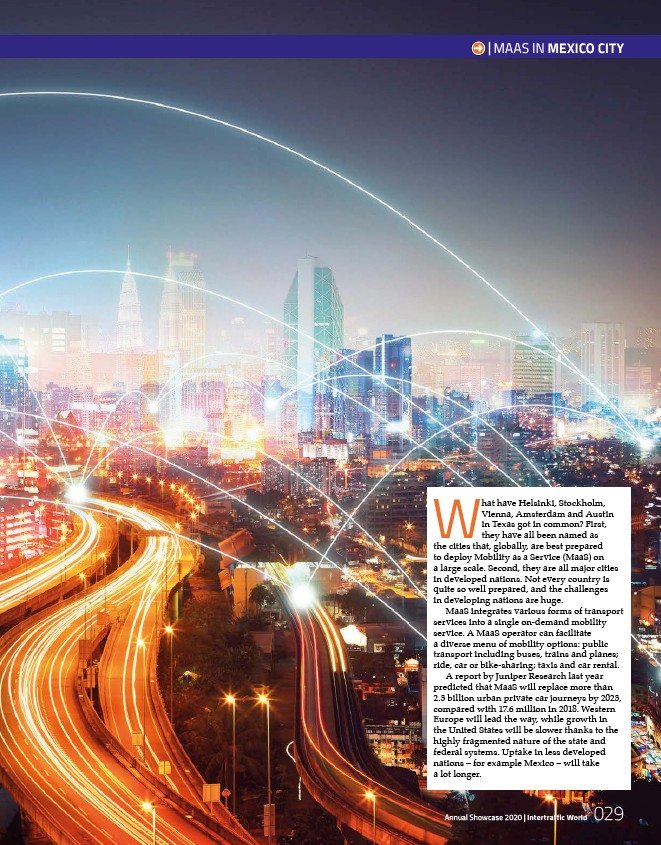
| MAAS IN MEXICO CITY
What have Helsinki, Stockholm,
Vienna, Amsterdam and Austin
in Texas got in common? First,
they have all been named as
the cities that, globally, are best prepared
to deploy Mobility as a Service (MaaS) on
a large scale. Second, they are all major cities
in developed nations. Not every country is
quite so well prepared, and the challenges
in developing nations are huge.
MaaS integrates various forms of transport
services into a single on-demand mobility
service. A MaaS operator can facilitate
a diverse menu of mobility options: public
transport including buses, trains and planes;
ride, car or bike-sharing; taxis and car rental.
A report by Juniper Research last year
predicted that MaaS will replace more than
2.3 billion urban private car journeys by 2023,
compared with 17.6 million in 2018. Western
Europe will lead the way, while growth in
the United States will be slower thanks to the
highly fragmented nature of the state and
federal systems. Uptake in less developed
nations – for example Mexico – will take
a lot longer.
Annual Showcase 2020 | Intertraffic World 029